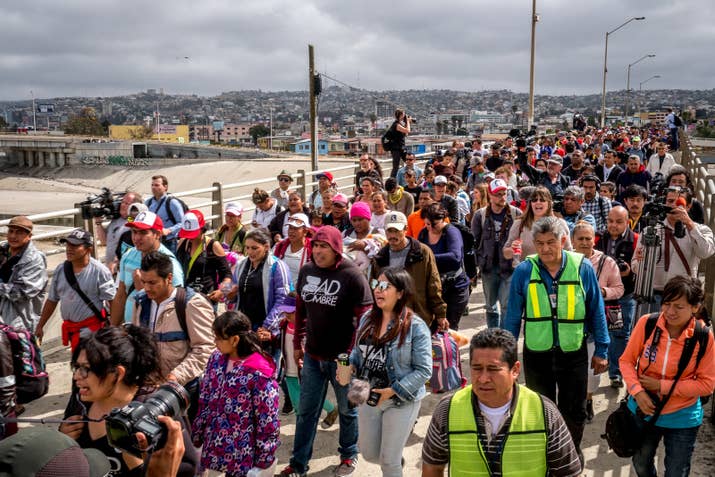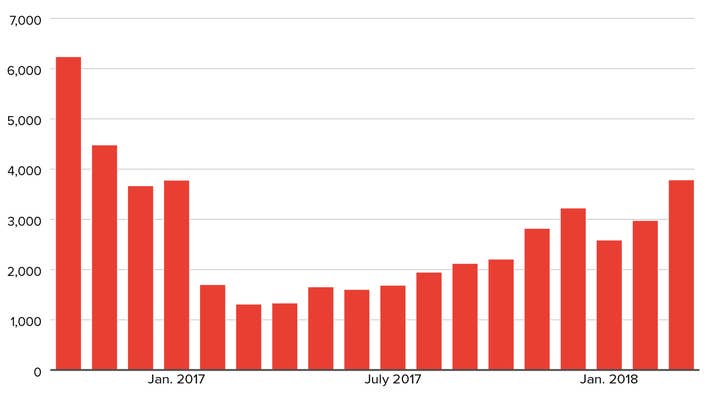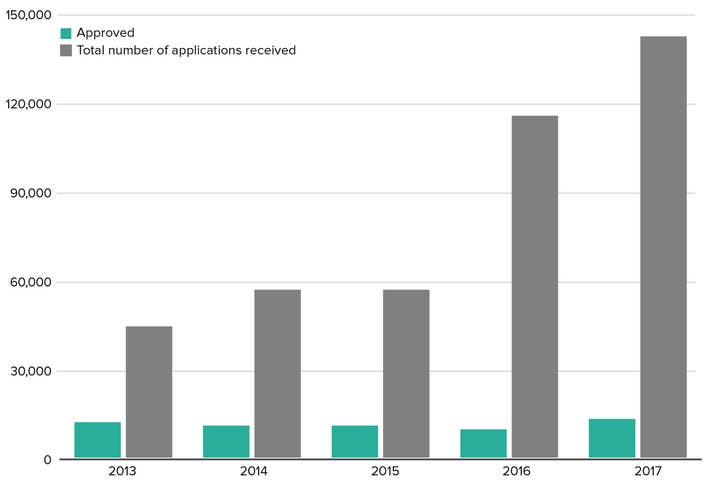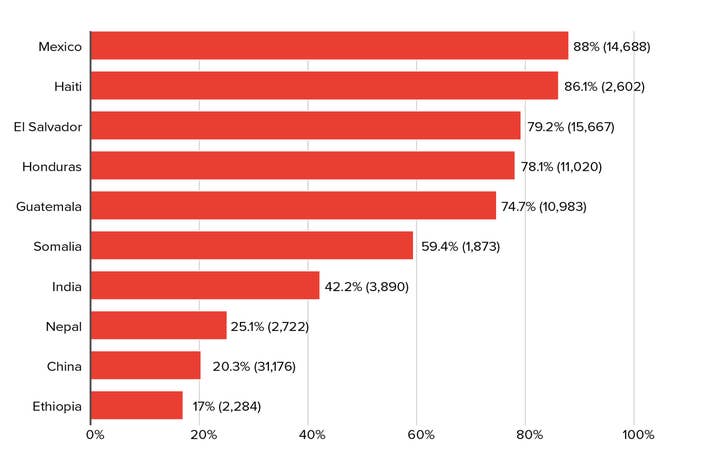The Caravan Of Asylum Seekers In Mexico Is Running Into A Massively Backlogged US System
The number of approved asylum applications has roughly stayed the same over time. But the total number of applications received every year has risen drastically.





After waiting more than 24 hours, just eight of the migrants in the caravan of Central Americans who traveled across Mexico to the US border were allowed to seek asylum on Monday evening — putting a massively backlogged system on national display.
As many as 200 plan to eventually seek asylum at the San Ysidro border crossing, one of the busiest US ports along the southern border. As of Tuesday morning, about 16 members were waiting and sleeping outside the point of entry while exposed to the weather. A few others were turned away Monday without being able to make their case. Most of the migrants will wait an indefinite period of time to be heard.Border officials have issued a flurry of confusing and seemingly contradictory statements to explain the delays.
Days before the caravan arrived, the Department of Homeland Security said that in order to “ensure that all cases and claims are adjudicated promptly” it was sending additional asylum officers, attorneys, immigration judges, and prosecutors to the border. DHS would not tell BuzzFeed News where the additional personnel had been deployed to help process the caravan, and how many.
But when the caravan arrived at San Ysidro on Sunday, US Customs and Border Patrol said the San Ysidro port of entry had “reached capacity" and that caravan members would have to wait in Mexico.
Then, Monday evening, border officials called the delay "a temporary situation," explaining, "CBP has processed several hundred people presenting at the San Ysidro port of entry in the past week, to include many Mexican citizens who arrived at the port of entry to claim credible fear/asylum ahead of the caravan’s arrival."
In March, 3,786 people, including potential asylum seekers, were turned away at the closest field office in San Diego. Here's how that stacks up to the past year and a half:

Now, let's take a step back from the San Ysidro point of entry and look at the issue nationwide.
The US is under strict obligation under international law to accept and provide for refugees and asylum seekers. Anyone persecuted due to their race, religion, nationality, politics or for being a member of a particular social group can apply for asylum, either when they arrive or when they have already immigrated to the US.
But the system has been backlogged for years.
While the number of approved asylum applications throughout the US has stayed mostly the same since 2013, the total number of applications per year has risen drastically:

And for Central Americans, like Hondurans, who make up the majority of the caravan, denial rates have been particularly high. The chart below shows the number of asylum case denials grouped by nationality of the applicant and sorted by the highest rates of denials. Hondurans see the fourth highest denial rates:

While protections apply across the board for people who qualify for asylum, each administration gets to issue policies around how these cases are processed. Under Trump, asylum application procedures have come under particular scrutiny.
“The system is being gamed. The credible fear process was intended to be a lifeline for persons facing serious persecution. But it has become an easy ticket to illegal entry into the United States,“ said Attorney General Jeff Sessions in a speech in October last year.
“The Trump administration narrowed the pathway for asylum immediately when it issued its executive orders in January 2017,” Archi Pyati, chief of policy at the Tahirih Justice Center, a non-profit that works with women asylum seekers primarily from Central America, told BuzzFeed News.
It “also created increasing backlogs for adjudication [asylum case processing] by flattening immigration enforcement priorities and putting thousands of immigrants with no criminal issues in front of immigration courts," Pyati said. "Many deserving individuals are being turned away at the border before they even have a chance to speak with a judge.”
We may not yet have a wall, but at least we have a ball: of red tape.
ReplyDelete